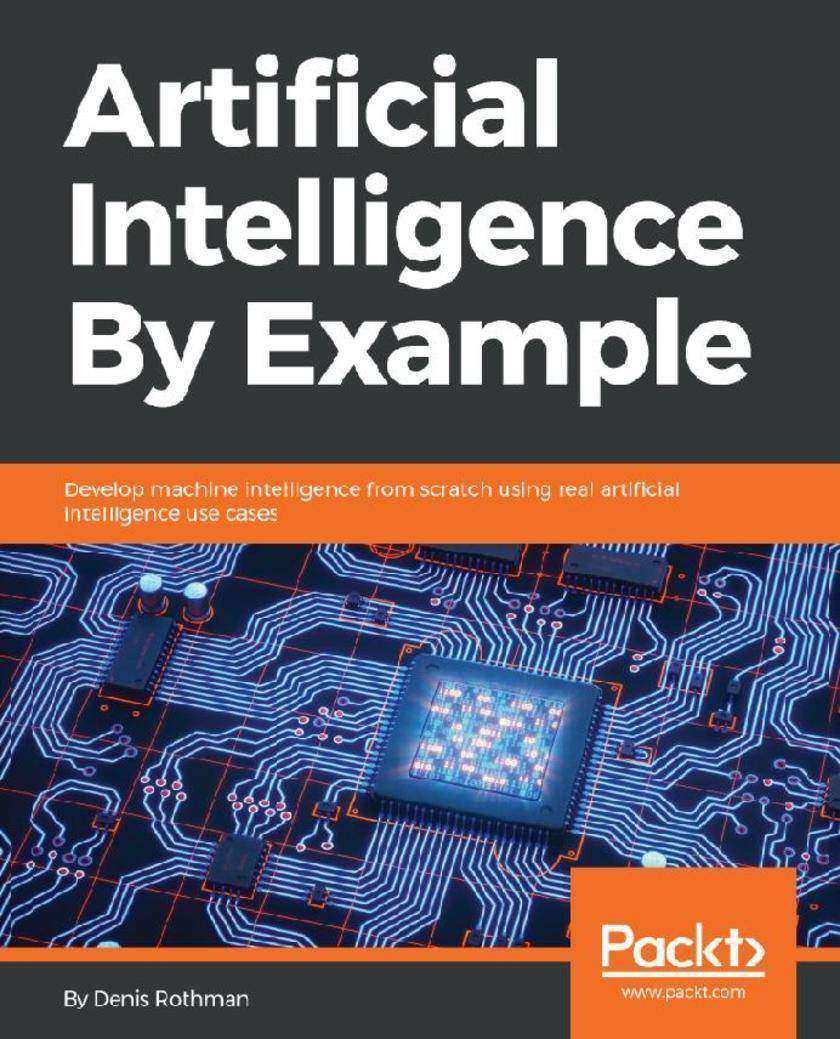
Artificial Intelligence By Example
¥73.02
Be an adaptive thinker that leads the way to Artificial Intelligence About This Book ? AI-based examples to guide you in designing and implementing machine intelligence ? Develop your own method for future AI solutions ? Acquire advanced AI, machine learning, and deep learning design skills Who This Book Is For Artificial Intelligence by Example is a simple, explanatory, and descriptive guide for junior developers, experienced developers, technology consultants, and those interested in AI who want to understand the fundamentals of Artificial Intelligence and implement it practically by devising smart solutions. Prior experience with Python and statistical knowledge is essential to make the most out of this book. What You Will Learn ? Use adaptive thinking to solve real-life AI case studies ? Rise beyond being a modern-day factory code worker ? Acquire advanced AI, machine learning, and deep learning designing skills ? Learn about cognitive NLP chatbots, quantum computing, and IoT and blockchain technology ? Understand future AI solutions and adapt quickly to them ? Develop out-of-the-box thinking to face any challenge the market presents In Detail Artificial Intelligence has the potential to replicate humans in every field. This book serves as a starting point for you to understand how AI is built, with the help of intriguing examples and case studies. Artificial Intelligence By Example will make you an adaptive thinker and help you apply concepts to real-life scenarios. Using some of the most interesting AI examples, right from a simple chess engine to a cognitive chatbot, you will learn how to tackle the machine you are competing with. You will study some of the most advanced machine learning models, understand how to apply AI to blockchain and IoT, and develop emotional quotient in chatbots using neural networks. You will move on to designing AI solutions in a simple manner rather than get confused by complex architectures and techniques. This comprehensive guide will be a starter kit for you to develop AI applications on your own. By the end of this book, will have understood the fundamentals of AI and worked through a number of case studies that will help you develop business vision. Style and approach An easy-to-follow step by step guide which will help you get to grips with real world application of Artificial Intelligence
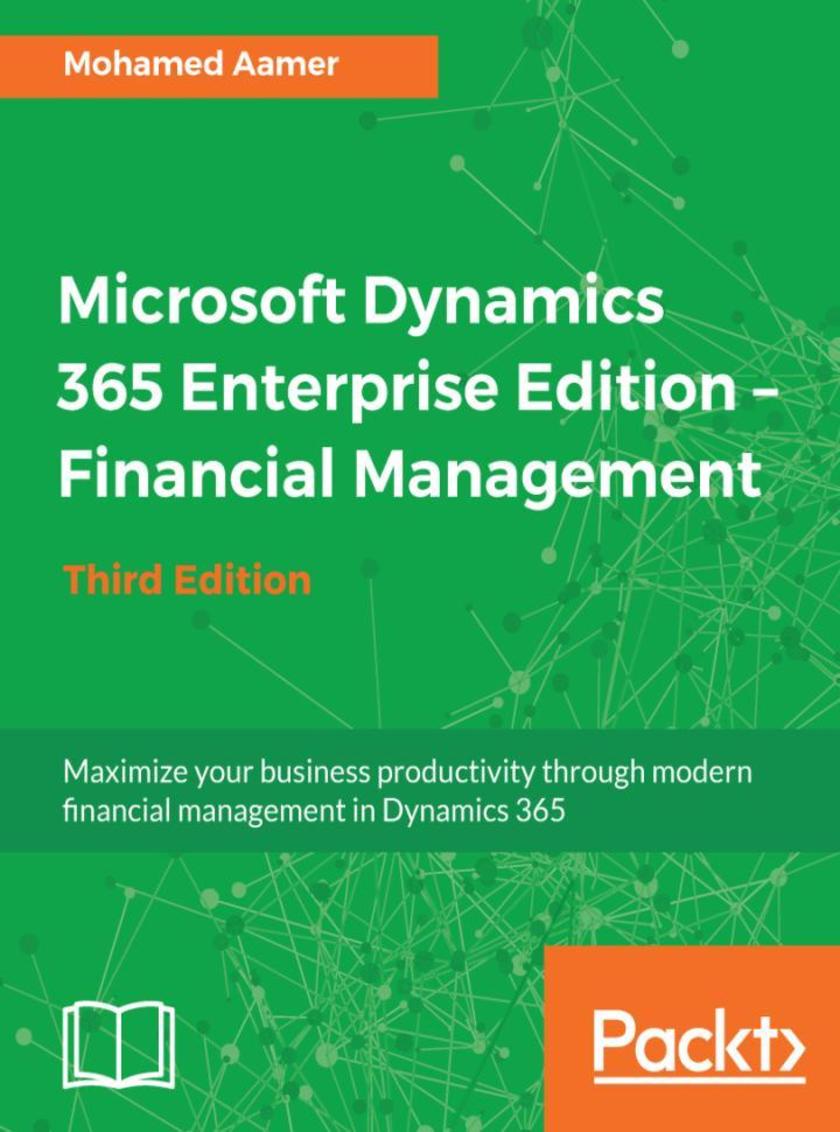
Microsoft Dynamics 365 Enterprise Edition – Financial Management - Third Edition
¥99.18
Boost your accounting and financial skills with Microsoft Dynamics 365 About This Book ? Make real-time data-driven decisions for your enterprise with Microsoft Dynamics 365 Enterprise edition ? Configure and set up the Microsoft Dynamics 365 financial module via highly useful tips and tricks ? Administer customer relations and plan enterprise resources with this systematic guide Who This Book Is For This book is for application consultants, solution architects, controllers, CFOs, pre-sales and other professionals who are involved in a Microsoft Dynamics 365 for finance and operation implementation. Basic knowledge of financial terms, concepts, and terminologies is required. What You Will Learn ? Examine the business logic behind the financial functionalities of Microsoft Dynamics 365 FFO ? Set up and configure the core modules of financial management ? Grasp the key control points of financial management ? Explore intercompany and consolidation in Microsoft Dynamics 365 FFO ? Understand multi-currency sales, tax mechanisms, and budgeting capabilities in Microsoft Dynamics 365 FFO ? Get to grips with month/year-end period close functionality ? Understand the account payable and receivable module ? Use Microsoft Dynamics 365 to create financial reports In Detail Microsoft Dynamics 365 for finance and operations is a rapidly growing application and is widely used in enterprise organizations. Because of its ability to maximize business productivity, it is a fast-growing business application package in the ERP market. We will start by looking into ERP concepts, implementation needs, and interface design, giving you basic knowledge of financial management aspects and explaining key concepts along the way. To begin with, you'll be taken through the general ledger and financial dimension functions. You'll later learn about the sales tax mechanism and multi-currency in Microsoft Dynamics 365. We tackle each topic with focused examples and explanations on topics such as payable/receivable accounts, forecasting, cash and bank management, budgeting planning/control, and fixed assets. Finally, we walk you through intercompany, consolidation, costing basics, and financial reporting. By the end of this book, your finance team will have a much richer understanding of Microsoft Dynamics 365 for finance and operations and its powerful capabilities. Style and approach This book is a step-by-step guide focusing on implementing Dynamics 365 financial management for your organization.
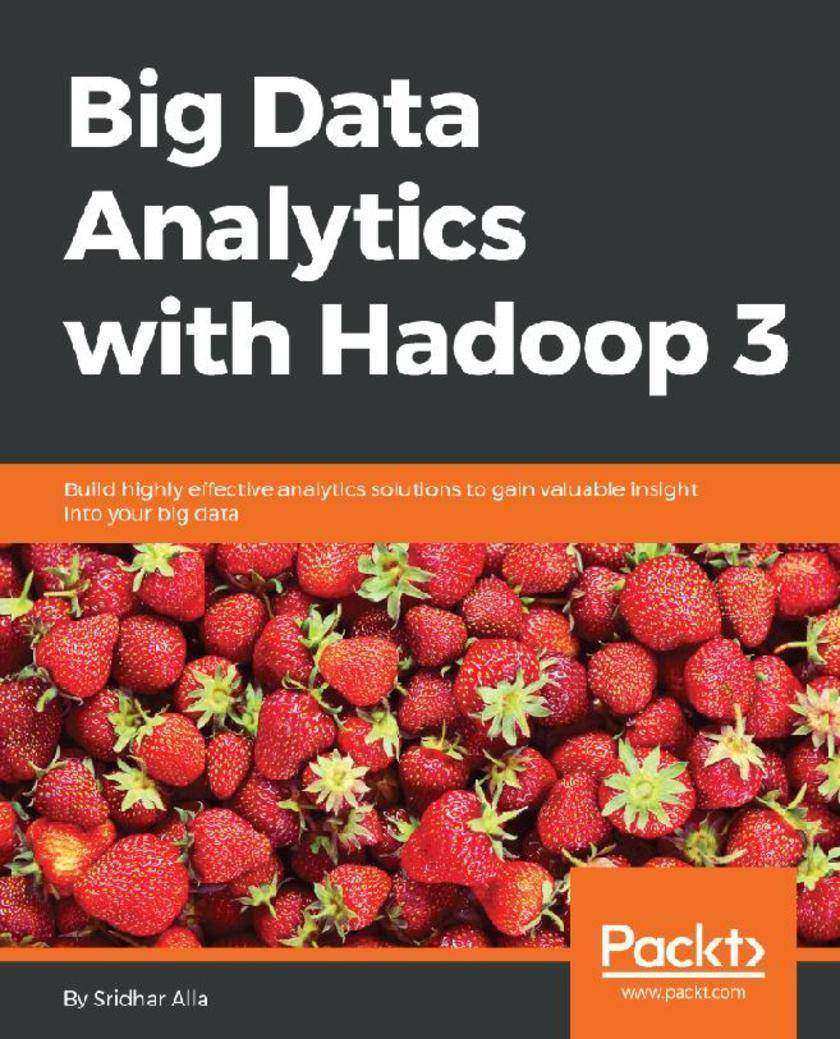
Big Data Analytics with Hadoop 3
¥73.02
Explore big data concepts, platforms, analytics, and their applications using the power of Hadoop 3 About This Book ? Learn Hadoop 3 to build effective big data analytics solutions on-premise and on cloud ? Integrate Hadoop with other big data tools such as R, Python, Apache Spark, and Apache Flink ? Exploit big data using Hadoop 3 with real-world examples Who This Book Is For Big Data Analytics with Hadoop 3 is for you if you are looking to build high-performance analytics solutions for your enterprise or business using Hadoop 3’s powerful features, or you’re new to big data analytics. A basic understanding of the Java programming language is required. What You Will Learn ? Explore the new features of Hadoop 3 along with HDFS, YARN, and MapReduce ? Get well-versed with the analytical capabilities of Hadoop ecosystem using practical examples ? Integrate Hadoop with R and Python for more efficient big data processing ? Learn to use Hadoop with Apache Spark and Apache Flink for real-time data analytics ? Set up a Hadoop cluster on AWS cloud ? Perform big data analytics on AWS using Elastic Map Reduce In Detail Apache Hadoop is the most popular platform for big data processing, and can be combined with a host of other big data tools to build powerful analytics solutions. Big Data Analytics with Hadoop 3 shows you how to do just that, by providing insights into the software as well as its benefits with the help of practical examples. Once you have taken a tour of Hadoop 3’s latest features, you will get an overview of HDFS, MapReduce, and YARN, and how they enable faster, more efficient big data processing. You will then move on to learning how to integrate Hadoop with the open source tools, such as Python and R, to analyze and visualize data and perform statistical computing on big data. As you get acquainted with all this, you will explore how to use Hadoop 3 with Apache Spark and Apache Flink for real-time data analytics and stream processing. In addition to this, you will understand how to use Hadoop to build analytics solutions on the cloud and an end-to-end pipeline to perform big data analysis using practical use cases. By the end of this book, you will be well-versed with the analytical capabilities of the Hadoop ecosystem. You will be able to build powerful solutions to perform big data analytics and get insight effortlessly. Style and approach Filled with practical examples and use cases, this book will not only help you get up and running with Hadoop, but will also take you farther down the road to deal with Big Data Analytics

Splunk Operational Intelligence Cookbook
¥99.18
Leverage Splunk's operational intelligence capabilities to unlock new hidden business insights and drive success About This Book ? Tackle any problems related to searching and analyzing your data with Splunk ? Get the latest information and business insights on Splunk 7.x ? Explore the all new machine learning toolkit in Splunk 7.x Who This Book Is For This book is intended for data professionals who are looking to leverage the Splunk Enterprise platform as a valuable operational intelligence tool. The recipes provided in this book will appeal to individuals from all facets of business, IT, security, product, marketing, and many more! Even the existing users of Splunk who want to upgrade and get up and running with Splunk 7.x will find this book to be of great value. What You Will Learn ? Learn how to use Splunk to gather, analyze, and report on data ? Create dashboards and visualizations that make data meaningful ? Build an intelligent application with extensive functionalities ? Enrich operational data with lookups and workflows ? Model and accelerate data and perform pivot-based reporting ? Apply ML algorithms for forecasting and anomaly detection ? Summarize data for long term trending, reporting, and analysis ? Integrate advanced JavaScript charts and leverage Splunk's API In Detail Splunk makes it easy for you to take control of your data, and with Splunk Operational Cookbook, you can be confident that you are taking advantage of the Big Data revolution and driving your business with the cutting edge of operational intelligence and business analytics. With more than 70 recipes that demonstrate all of Splunk’s features, not only will you find quick solutions to common problems, but you’ll also learn a wide range of strategies and uncover new ideas that will make you rethink what operational intelligence means to you and your organization. You’ll discover recipes on data processing, searching and reporting, dashboards, and visualizations to make data shareable, communicable, and most importantly meaningful. You’ll also find step-by-step demonstrations that walk you through building an operational intelligence application containing vital features essential to understanding data and to help you successfully integrate a data-driven way of thinking in your organization. Throughout the book, you’ll dive deeper into Splunk, explore data models and pivots to extend your intelligence capabilities, and perform advanced searching with machine learning to explore your data in even more sophisticated ways. Splunk is changing the business landscape, so make sure you’re taking advantage of it. Style and approach With more than 70 recipes that demonstrate all of Splunk’s features, not only will you find quick solutions to common problems, but you’ll also learn a wide range of strategies and uncover new ideas that will make you rethink what operational intelligence means to you and your organization.
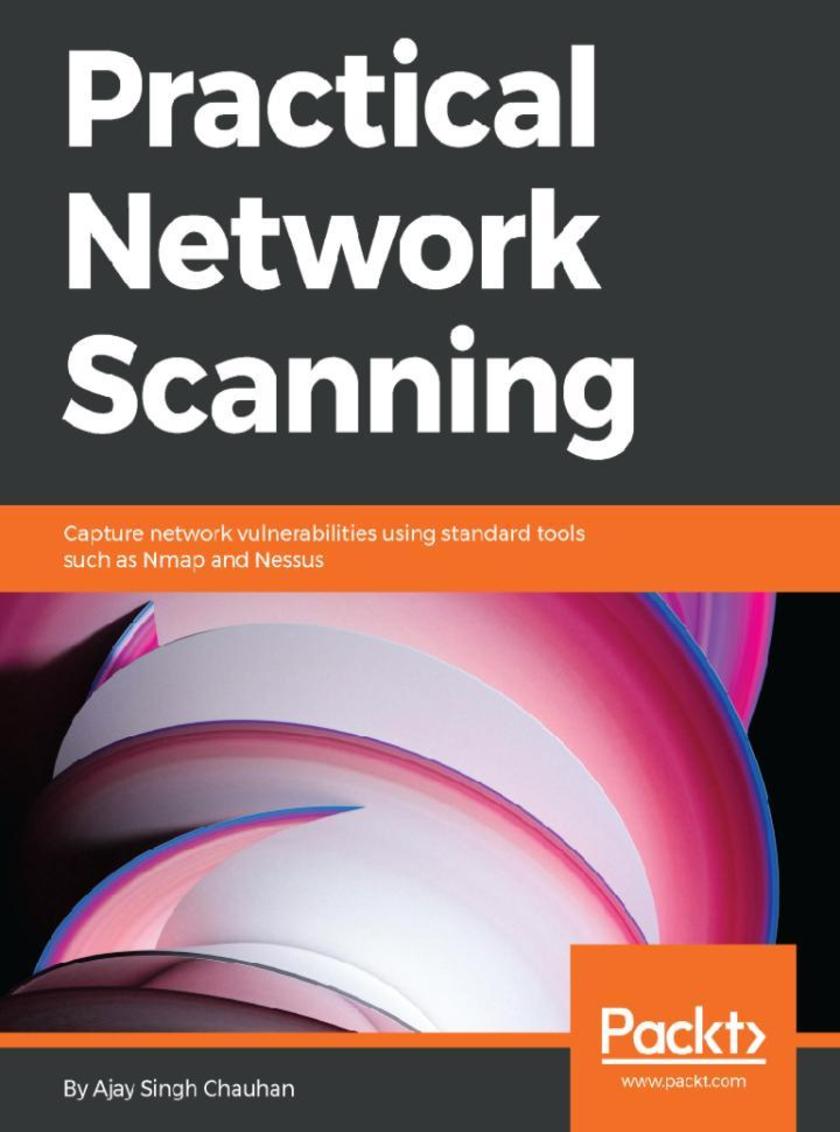
Practical Network Scanning
¥73.02
Get more from your network by securing its infrastructure and increasing its effectiveness About This Book ? Learn to choose the best network scanning toolset for your system ? Implement different concepts of network scanning such as port scanning and OS detection ? Adapt a practical approach to securing your network Who This Book Is For If you are a security professional who is responsible for securing an organization's infrastructure, then this book is for you. What You Will Learn ? Achieve an effective security posture to design security architectures ? Learn vital security aspects before moving to the Cloud ? Launch secure applications with Web Application Security and SQL Injection ? Explore the basics of threat detection/response/ mitigation with important use cases ? Learn all about integration principles for PKI and tips to secure it ? Design a WAN infrastructure and ensure security over a public WAN In Detail Network scanning is the process of assessing a network to identify an active host network; same methods can be used by an attacker or network administrator for security assessment. This procedure plays a vital role in risk assessment programs or while preparing a security plan for your organization. Practical Network Scanning starts with the concept of network scanning and how organizations can benefit from it. Then, going forward, we delve into the different scanning steps, such as service detection, firewall detection, TCP/IP port detection, and OS detection. We also implement these concepts using a few of the most prominent tools on the market, such as Nessus and Nmap. In the concluding chapters, we prepare a complete vulnerability assessment plan for your organization. By the end of this book, you will have hands-on experience in performing network scanning using different tools and in choosing the best tools for your system. Style and approach A practical guide that offers a simple way to easily understand network security concepts and apply them to strengthen your network.
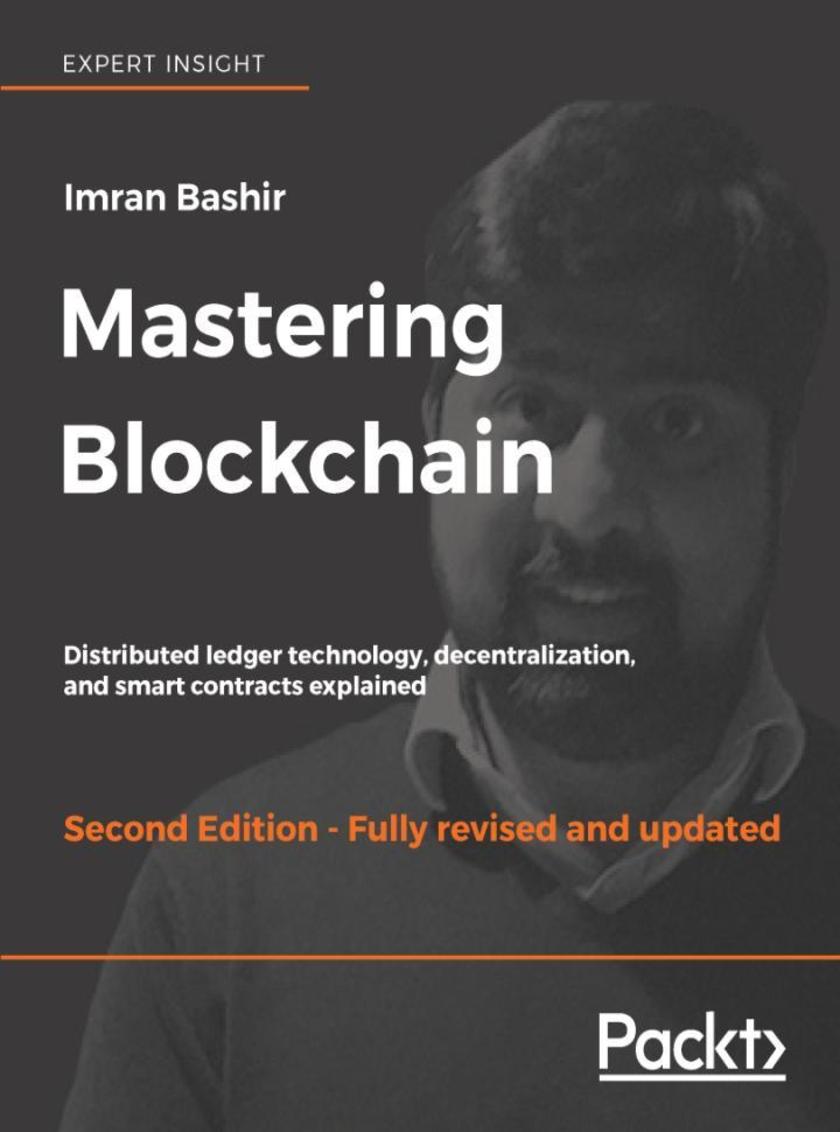
Mastering Blockchain - Second Edition
¥81.74
Learn about cryptography and cryptocurrencies, so you can build highly secure, decentralized applications and conduct trusted in-app transactions. About This Book ? Get to grips with the underlying technical principles and implementations of blockchain ? Build powerful applications using Ethereum to secure transactions and create smart contracts ? Explore cryptography, mine cryptocurrencies, and solve scalability issues with this comprehensive guide Who This Book Is For This book will appeal to those who wish to build fast, highly secure, transactional applications. It targets people who are familiar with the concept of blockchain and are comfortable with a programming language. What You Will Learn ? Master the theoretical and technical foundations of the blockchain technology ? Understand the concept of decentralization, its impact, and its relationship with blockchain technology ? Master how cryptography is used to secure data - with practical examples ? Grasp the inner workings of blockchain and the mechanisms behind bitcoin and alternative cryptocurrencies ? Understand the theoretical foundations of smart contracts ? Learn how Ethereum blockchain works and how to develop decentralized applications using Solidity and relevant development frameworks ? Identify and examine applications of the blockchain technology - beyond currencies ? Investigate alternative blockchain solutions including Hyperledger, Corda, and many more ? Explore research topics and the future scope of blockchain technology In Detail A blockchain is a distributed ledger that is replicated across multiple nodes and enables immutable, transparent and cryptographically secure record-keeping of transactions. The blockchain technology is the backbone of cryptocurrencies, and it has applications in finance, government, media and almost all other industries. Mastering Blockchain, Second Edition has been thoroughly updated and revised to provide a detailed description of this leading technology and its implementation in the real world. This book begins with the technical foundations of blockchain technology, teaching you the fundamentals of distributed systems, cryptography and how it keeps data secure. You will learn about the mechanisms behind cryptocurrencies and how to develop applications using Ethereum, a decentralized virtual machine. You will also explore different other blockchain solutions and get an introduction to business blockchain frameworks under Hyperledger, a collaborative effort for the advancement of blockchain technologies hosted by the Linux Foundation. You will also be shown how to implement blockchain solutions beyond currencies, Internet of Things with blockchain, blockchain scalability, and the future scope of this fascinating and powerful technology. Style and approach This comprehensive guide allows you to build smart blockchain applications and explore the power of this database. The book will let you quickly brush up on the basics of the blockchain database, followed by advanced implementations of blockchain in currency, smart contracts, decentralization, and so on.
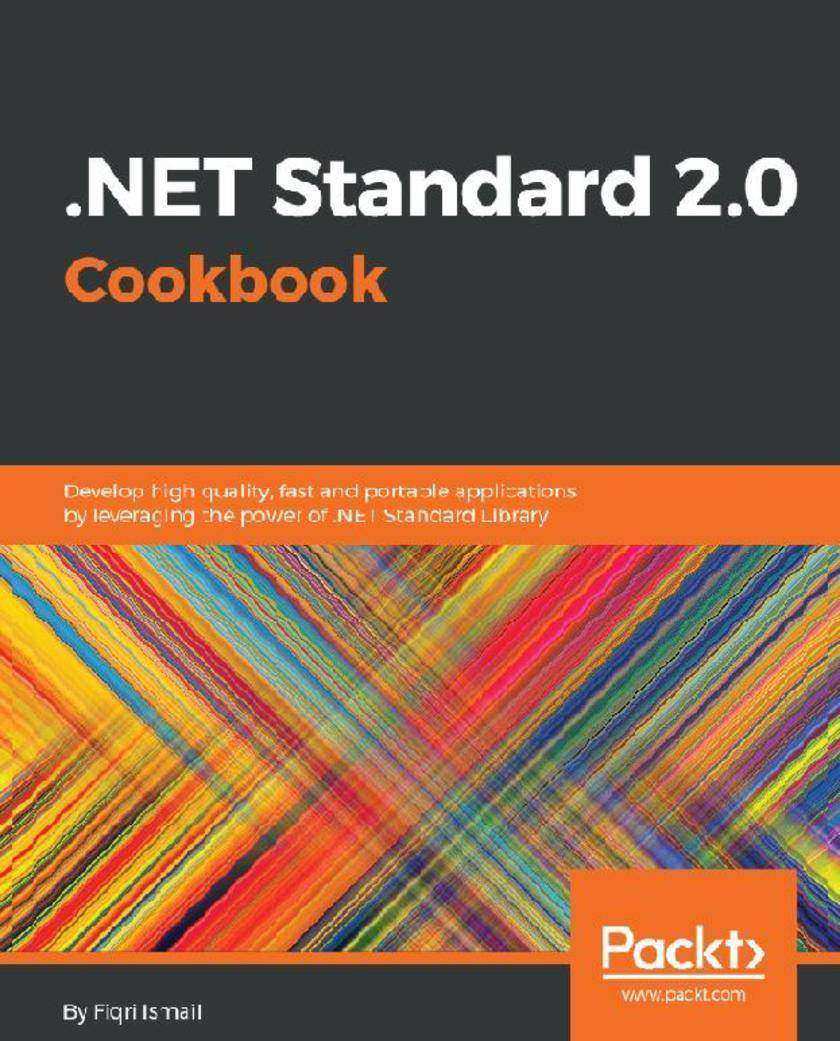
.NET Standard 2.0 Cookbook
¥90.46
Get the most out of .NET framework using standard libraries and create a .NET Standard 2.0 library from scratch About This Book ? Write code once and share within .NET ecosystem in Windows, Linux and macOS ? Give your .NET Libraries a common framework in cloud and on premise with the latest .NET Standard 2.0 ? Build a wide range of applications from Mobile with Xamarin to Web with ASP.NET Who This Book Is For This book is for .NET developers who are looking to build dynamic applications with the latest .NET Standard. C# knowledge is required. What You Will Learn ? Create a .NET Standard 2.0 library ? Use System.IO within the .NET Standard 2.0 ? Make use of your legacy .NET libraries with the new .NET Core standard ? Explore the thread support to create a multithreaded .NET Standard 2.0 library ? Create a .NET Standard 2.0 library and use it with an Android and iOS application ? Implement various Visual Studio 2017 diagnostics and debugging tools ? Create a NuGet Package and submit the package to the NuGet Package Manager ? Use Visual Studio 2017 azure tools to deploy the application to Azure ? Test and deliver a .NET Standard 2.0 library In Detail The .NET Standard is a standard that represents a set of APIs that all .NET platforms have to implement, making it easy for developers to access and use one common library for their development needs. This book begins with a quick refresher, helping you understand the mechanics of the new standard and offering insight into how it works. You’ll explore the core library concepts, such as working with collections, configurations, I/O, security, and multithreading. You’ll explore the iOS and Android libraries of Xamarin and we’ll guide you through creating a .NET Standard 2.0 library, which you’ll use with both Android and iOS applications. In the final chapters, you’ll learn the various debugging and diagnostics tools to deliver quality libraries and create a NuGet package of the .NET Standard 2.0 library. By the end of this book, you’ll be able to expand your current workflow to various .NET flavors and have the essential skills to create a .NET Standard 2.0 library from scratch to package and deliver it to the world. Style and approach A recipe-based approach to help you get the most out of the .NET Standard 2.0 Library that can be implemented to all the .NET Platforms
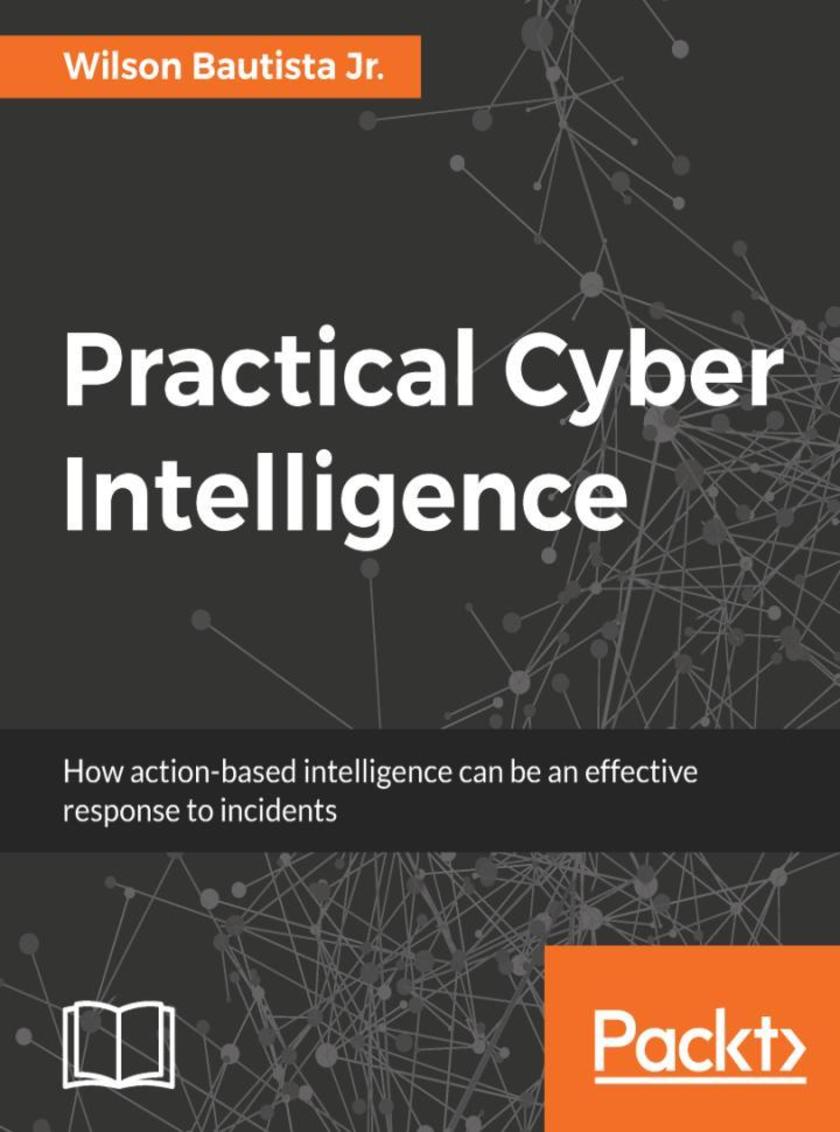
Practical Cyber Intelligence
¥81.74
Your one stop solution to implement a Cyber Defense Intelligence program in to your organisation. About This Book ? Intelligence processes and procedures for response mechanisms ? Master F3EAD to drive processes based on intelligence ? Threat modeling and intelligent frameworks ? Case studies and how to go about building intelligent teams Who This Book Is For This book targets incident managers, malware analysts, reverse engineers, digital forensics specialists, and intelligence analysts; experience in, or knowledge of, security operations, incident responses or investigations is desirable so you can make the most of the subjects presented. What You Will Learn ? Learn about the Observe-Orient-Decide-Act (OODA) loop and it's applicability to security ? Understand tactical view of Active defense concepts and their application in today's threat landscape ? Get acquainted with an operational view of the F3EAD process to drive decision making within an organization ? Create a Framework and Capability Maturity Model that integrates inputs and outputs from key functions in an information security organization ? Understand the idea of communicating with the Potential for Exploitability based on cyber intelligence In Detail Cyber intelligence is the missing link between your cyber defense operation teams, threat intelligence, and IT operations to provide your organization with a full spectrum of defensive capabilities. This book kicks off with the need for cyber intelligence and why it is required in terms of a defensive framework. Moving forward, the book provides a practical explanation of the F3EAD protocol with the help of examples. Furthermore, we learn how to go about threat models and intelligence products/frameworks and apply them to real-life scenarios. Based on the discussion with the prospective author I would also love to explore the induction of a tool to enhance the marketing feature and functionality of the book. By the end of this book, you will be able to boot up an intelligence program in your organization based on the operation and tactical/strategic spheres of Cyber defense intelligence. Style and approach A step-by-step practical guide that will help you master defensive frameworks to secure your system, and the F3EAD protocol to help you boot up an intelligence program in your organization.
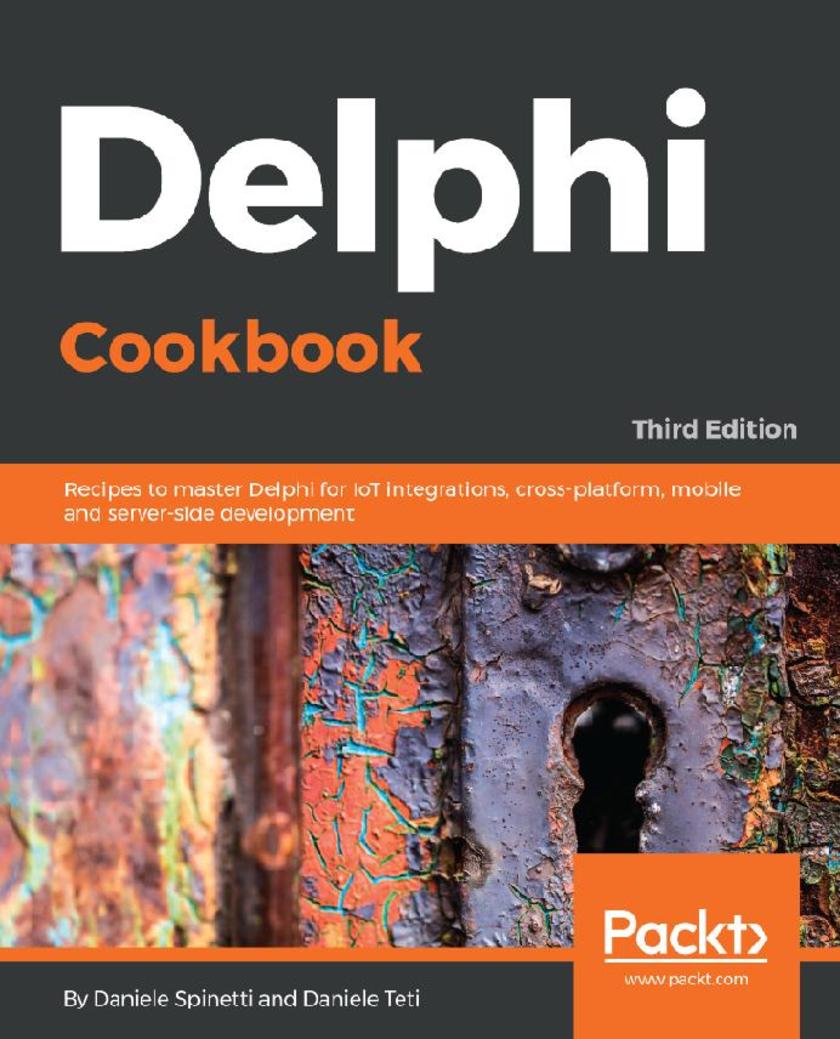
Delphi Cookbook,
¥87.19
A fast-paced guide to putting your GeoServer-based application into fast, user-friendly, and secure production Key Features * Resolve bottlenecks, optimize data stores, and cluster server resources * Use identity management and authentication for a user-specific, secure web application * Go beyond traditional web hosting to explore the full range of hosting options in the cloud Book Description GeoServer is open source, server-side software written in Java that allows users to share and edit geospatial data. In this book, you'll start by learning how to develop a spatial analysis platform with web processing services. Then you'll see how to develop an algorithm by chaining together geospatial analysis processes, which you can share with anyone in the world. Next you'll delve into a very important technique to improve the speed of your map application—tile caching. Here, you'll understand how tile caching works, how to develop an effective tile cache-supported web service, and how to leverage tile caching in your OpenLayers web application. Further on, you'll explore important tweaks to produce a performant GeoServer-backed web mapping application. Moving on, you'll enable authentication on the frontend and backend to protect sensitive map data, and deliver sensitive data to your end user. Finally, you'll see how to put your web application into production in a secure and user-friendly way. You'll go beyond traditional web hosting to explore the full range of hosting options in the cloud, and maintain a reliable server instance. What you will learn * Develop a WPS-processing service to allow web-based geospatial data processing * Get to know important techniques to improve the speed of your web map application—tile caching, raster data optimization, and server clustering * Find out which GeoServer settings resolve bottlenecks * Develop an algorithm by chaining geospatial analysis processes together * Put your application into production with hosting, monitoring, and automated backup and recovery * Understand how to develop an effective tile cache-supported web service * Master techniques that ensure resilient server deployment Who this book is for This book is for anyone who wants to learn about advanced interfaces, security, and troubleshooting techniques in GeoServer. A basic understanding of GeoServer is required
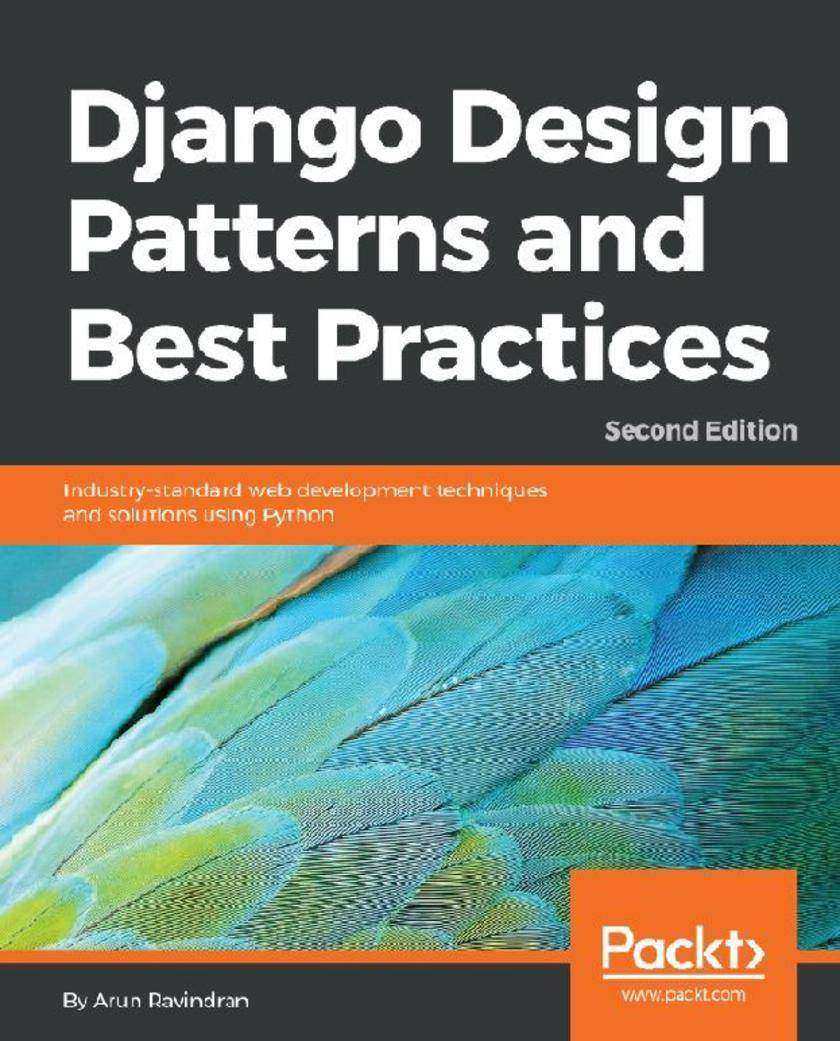
Django Design Patterns and Best Practices
¥81.74
Build maintainable websites with elegant Django design patterns and modern best practices About This Book ? Explore aspects of Django from Models and Views to testing and deployment ? Understand the nuances of web development such as browser attack and data design ? Walk through various asynchronous tools such as Celery and Channels Who This Book Is For This book is for you whether you’re new to Django or just want to learn its best practices. You do not have to be an expert in Django or Python. No prior knowledge of patterns is expected for reading this book but it would be helpful. What You Will Learn ? Make use of common design patterns to help you write better code ? Implement best practices and idioms in this rapidly evolving framework ? Deal with legacy code and debugging ? Use asynchronous tools such as Celery, Channels, and asyncio ? Use patterns while designing API interfaces with the Django REST Framework ? Reduce the maintenance burden with well-tested, cleaner code ? Host, deploy, and secure your Django projects In Detail Building secure and maintainable web applications requires comprehensive knowledge. The second edition of this book not only sheds light on Django, but also encapsulates years of experience in the form of design patterns and best practices. Rather than sticking to GoF design patterns, the book looks at higher-level patterns. Using the latest version of Django and Python, you’ll learn about Channels and asyncio while building a solid conceptual background. The book compares design choices to help you make everyday decisions faster in a rapidly changing environment. You’ll first learn about various architectural patterns, many of which are used to build Django. You’ll start with building a fun superhero project by gathering the requirements, creating mockups, and setting up the project. Through project-guided examples, you’ll explore the Model, View, templates, workflows, and code reusability techniques. In addition to this, you’ll learn practical Python coding techniques in Django that’ll enable you to tackle problems related to complex topics such as legacy coding, data modeling, and code reusability. You’ll discover API design principles and best practices, and understand the need for asynchronous workflows. During this journey, you’ll study popular Python code testing techniques in Django, various web security threats and their countermeasures, and the monitoring and performance of your application. Style and approach This comprehensive project-driven guide will enhance your skill set by taking you through the well-known design patterns and industry-standard best practices in Django web development.
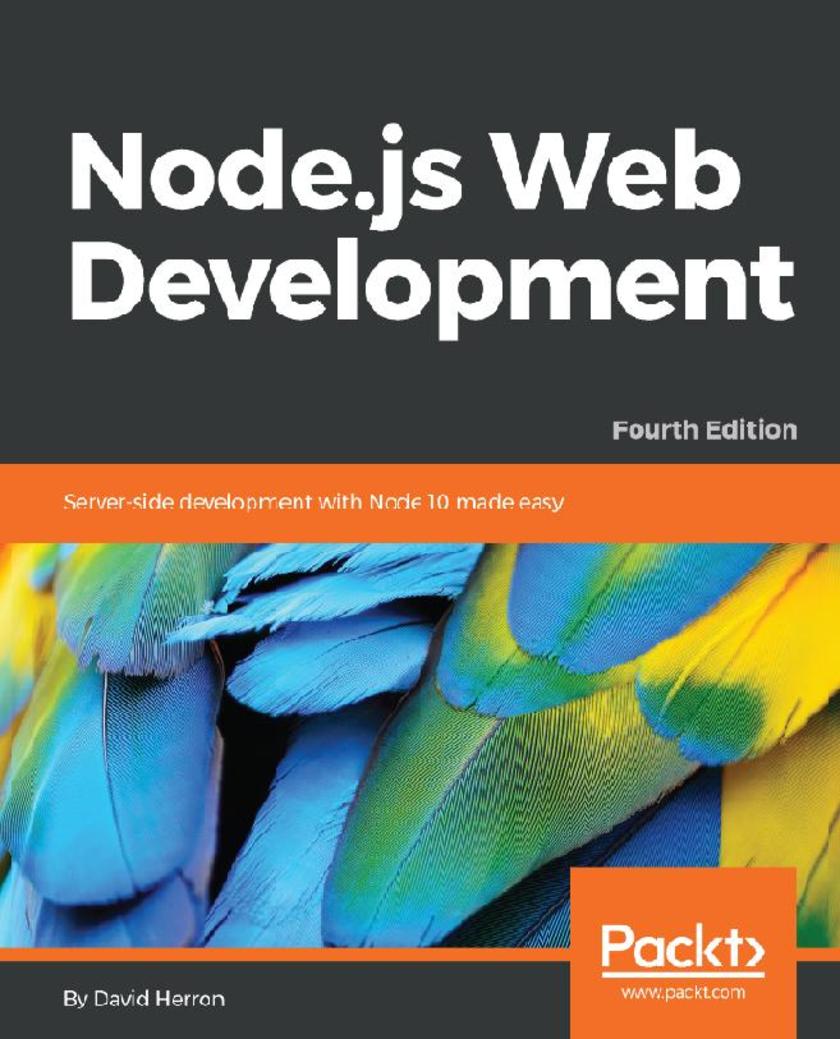
Node.js Web Development
¥81.74
Create real-time applications using Node.js 10, Docker, MySQL, MongoDB, and Socket.IO with this practical guide and go beyond the developer's laptop to cover live deployment, including HTTPS and hardened security. About This Book ? Learn server-side JavaScript coding through the most up-to-date book on Node.js ? Explore the latest JavaScript features, and EcmaScript modules ? Walk through different stages of developing robust applications using Node.js 10 Who This Book Is For This book is for anybody looking for an alternative to the "P" languages (Perl, PHP, and Python), or anyone looking for a new paradigm of server-side application development. You should have at least a rudimentary understanding of JavaScript and web application development. What You Will Learn ? Install and use Node.js 10 for both development and deployment ? Use the Express 4.16 application framework ? Work with REST service development using the Restify framework ? Use data storage engines such as MySQL, SQLITE3, and MongoDB ? Use User authentication methods with OAuth2 ? Perform Real-time communication with the front-end using Socket.IO ? Implement Docker microservices in development, testing and deployment ? Perform unit testing with Mocha 5.x, and functional testing with Puppeteer 1.1.x ? Work with HTTPS using Let’s Encrypt, and application security with Helmet In Detail Node.js is a server-side JavaScript platform using an event-driven, non-blocking I/O model allowing users to build fast and scalable data-intensive applications running in real time. This book gives you an excellent starting point, bringing you straight to the heart of developing web applications with Node.js. You will progress from a rudimentary knowledge of JavaScript and server-side development to being able to create, maintain, deploy and test your own Node.js application.You will understand the importance of transitioning to functions that return Promise objects, and the difference between fs, fs/promises and fs-extra. With this book you'll learn how to use the HTTP Server and Client objects, data storage with both SQL and MongoDB databases, real-time applications with Socket.IO, mobile-first theming with Bootstrap, microservice deployment with Docker, authenticating against third-party services using OAuth, and use some well known tools to beef up security of Express 4.16 applications. Style and approach Benefit from an easy, step-by-step approach that really works.
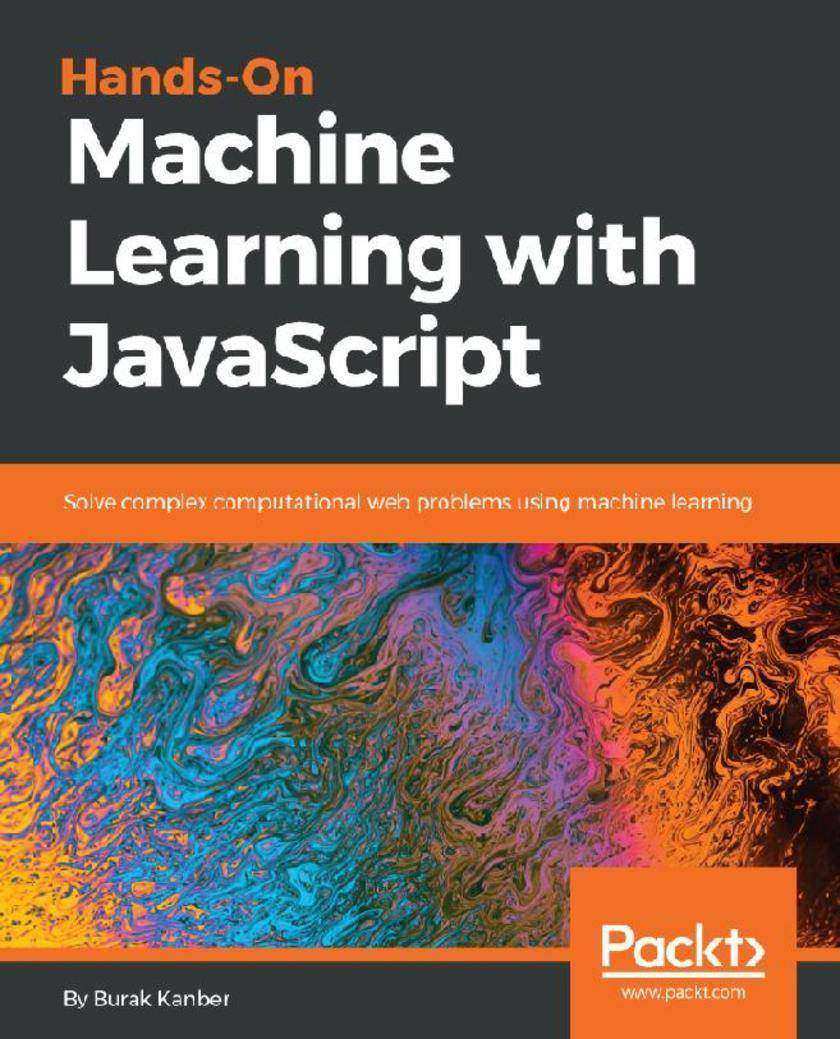
Hands-on Machine Learning with JavaScript
¥81.74
A definitive guide to creating an intelligent web application with the best of machine learning and JavaScript About This Book ? Solve complex computational problems in browser with JavaScript ? Teach your browser how to learn from rules using the power of machine learning ? Understand discoveries on web interface and API in machine learning Who This Book Is For This book is for you if you are a JavaScript developer who wants to implement machine learning to make applications smarter, gain insightful information from the data, and enter the field of machine learning without switching to another language. Working knowledge of JavaScript language is expected to get the most out of the book. What You Will Learn ? Get an overview of state-of-the-art machine learning ? Understand the pre-processing of data handling, cleaning, and preparation ? Learn Mining and Pattern Extraction with JavaScript ? Build your own model for classification, clustering, and prediction ? Identify the most appropriate model for each type of problem ? Apply machine learning techniques to real-world applications ? Learn how JavaScript can be a powerful language for machine learning In Detail In over 20 years of existence, JavaScript has been pushing beyond the boundaries of web evolution with proven existence on servers, embedded devices, Smart TVs, IoT, Smart Cars, and more. Today, with the added advantage of machine learning research and support for JS libraries, JavaScript makes your browsers smarter than ever with the ability to learn patterns and reproduce them to become a part of innovative products and applications. Hands-on Machine Learning with JavaScript presents various avenues of machine learning in a practical and objective way, and helps implement them using the JavaScript language. Predicting behaviors, analyzing feelings, grouping data, and building neural models are some of the skills you will build from this book. You will learn how to train your machine learning models and work with different kinds of data. During this journey, you will come across use cases such as face detection, spam filtering, recommendation systems, character recognition, and more. Moreover, you will learn how to work with deep neural networks and guide your applications to gain insights from data. By the end of this book, you'll have gained hands-on knowledge on evaluating and implementing the right model, along with choosing from different JS libraries, such as NaturalNode, brain, harthur, classifier, and many more to design smarter applications. Style and approach This is a practical tutorial that uses hands-on examples to step through some real-world applications of machine learning. Without shying away from the technical details, you will explore machine learning with JavaScript using clear and practical examples.
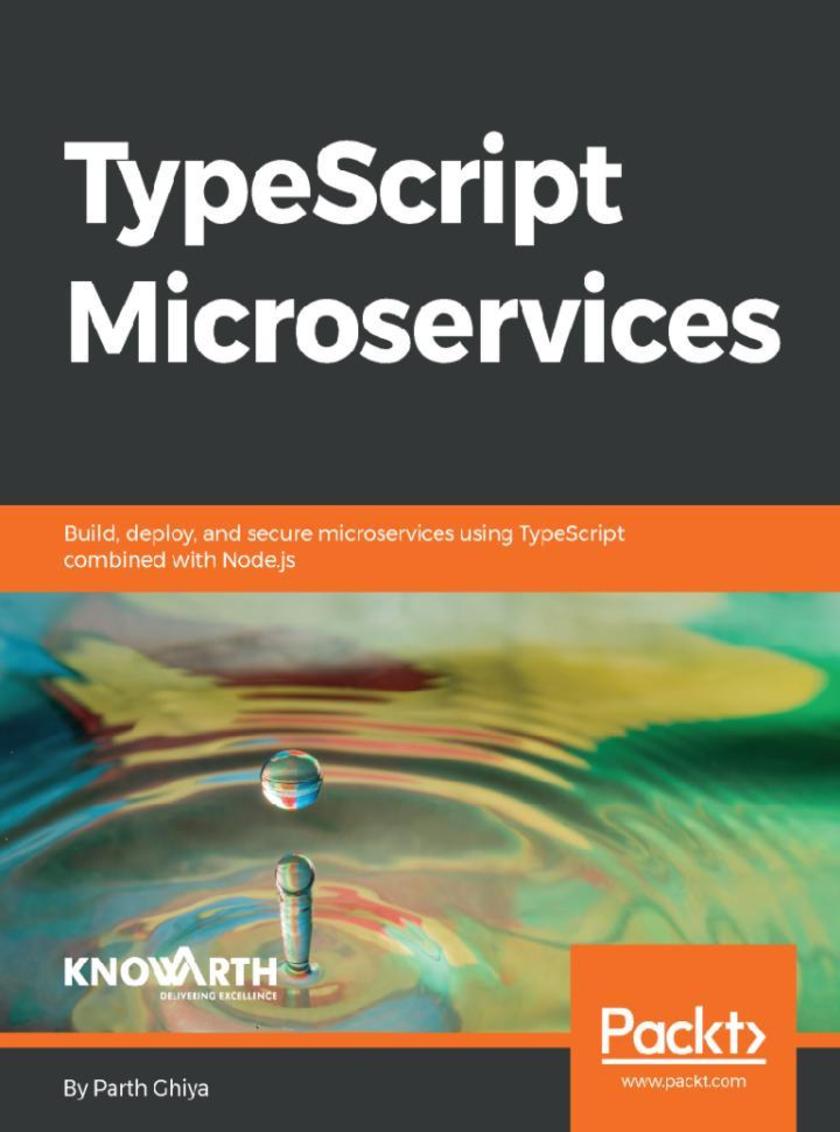
TypeScript Microservices
¥81.74
Build robust microservice-based applications that are distributed, fault tolerant, and always available About This Book ? Learn to build message-driven services for effective communication ? Design microservices API using Reactive programming design patterns ? Deploy, scale and monitor microservices for consistent high performance Who This Book Is For This book is for JavaScript developers seeking to utilize their Node.js and Typescript skills to build microservices and move away from the monolithic architecture. Prior knowledge of TypeScript and Node.js is assumed. What You Will Learn ? Get acquainted with the fundamentals behind microservices. ? Explore the behavioral changes needed for moving from monolithic to microservices. ? Dive into reactive programming, Typescript and Node.js to learn its fundamentals in microservices ? Understand and design a service gateway and service registry for your microservices. ? Maintain the state of microservice and handle dependencies. ? Perfect your microservice with unit testing and Integration testing ? Develop a microservice, secure it, deploy it, and then scale it In Detail In the last few years or so, microservices have achieved the rock star status and right now are one of the most tangible solutions in enterprises to make quick, effective, and scalable applications. The apparent rise of Typescript and long evolution from ES5 to ES6 has seen lots of big companies move to ES6 stack. If you want to learn how to leverage the power of microservices to build robust architecture using reactive programming and Typescript in Node.js, then this book is for you. Typescript Microservices is an end-to-end guide that shows you the implementation of microservices from scratch; right from starting the project to hardening and securing your services. We will begin with a brief introduction to microservices before learning to break your monolith applications into microservices. From here, you will learn reactive programming patterns and how to build APIs for microservices. The next set of topics will take you through the microservice architecture with TypeScript and communication between services. Further, you will learn to test and deploy your TypeScript microservices using the latest tools and implement continuous integration. Finally, you will learn to secure and harden your microservice. By the end of the book, you will be able to build production-ready, scalable, and maintainable microservices using Node.js and Typescript. Style and approach This book will be a step by step easy to follow guide with focused examples for building microservices with Typescript.
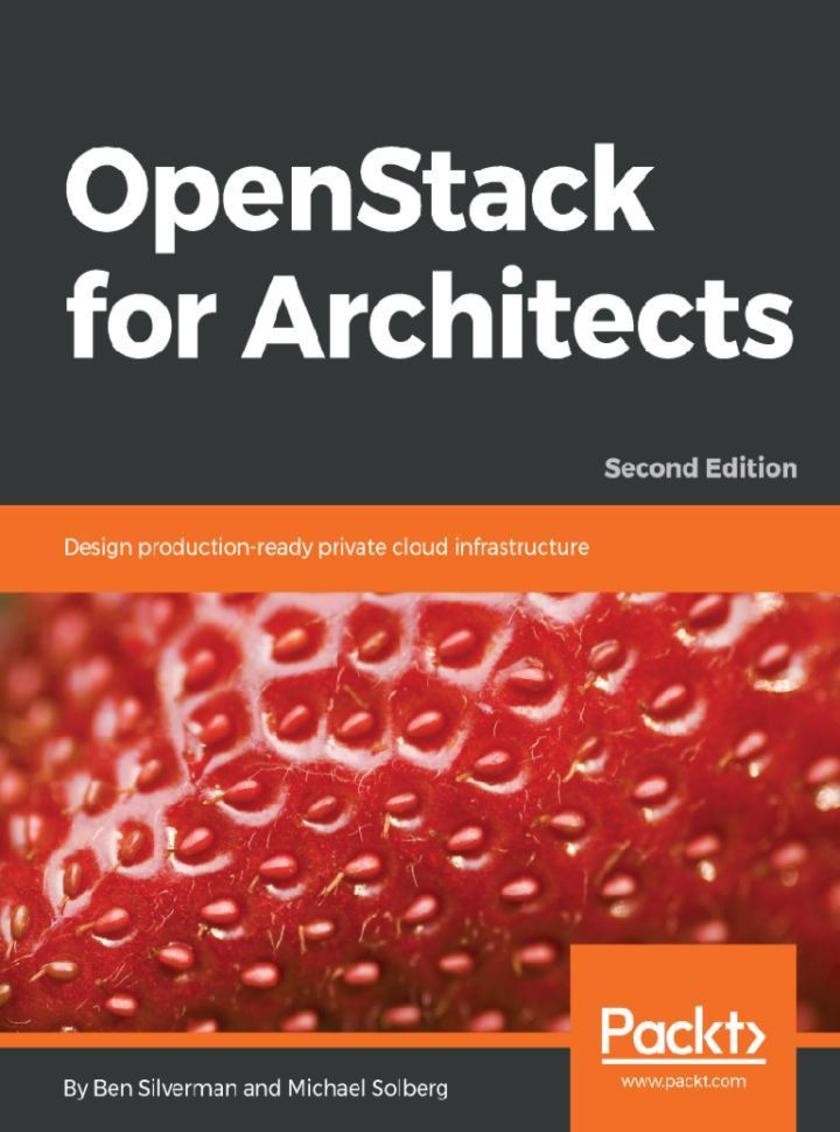
OpenStack for Architects
¥73.02
Implement successful private clouds with OpenStack About This Book ? Gain hands-on experience in designing a private cloud for all infrastructures ? Create a robust virtual environment for your organization ? Design, implement and deploy an OpenStack-based cloud based on the Queens release Who This Book Is For OpenStack for Architects is for Cloud architects who are responsible to design and implement a private cloud with OpenStack. System engineers and enterprise architects will also find this book useful. Basic understanding of core OpenStack services, as well as some working experience of concepts, is recommended. What You Will Learn ? Learn the overall structure of an OpenStack deployment ? Craft an OpenStack deployment process which fits within your organization ? Apply Agile Development methodologies to engineer and operate OpenStack clouds ? Build a product roadmap for Infrastructure as a Service based on OpenStack ? Make use of containers to increase the manageability and resiliency of applications running in and on OpenStack. ? Use enterprise security guidelines for your OpenStack deployment In Detail Over the past six years, hundreds of organizations have successfully implemented Infrastructure as a Service (IaaS) platforms based on OpenStack. The huge amount of investment from these organizations, including industry giants such as IBM and HP, as well as open source leaders, such as Red Hat, Canonical, and SUSE, has led analysts to label OpenStack as the most important open source technology since the Linux operating system. Due to its ambitious scope, OpenStack is a complex and fast-evolving open source project that requires a diverse skill set to design and implement it. OpenStack for Architects leads you through the major decision points that you'll face while architecting an OpenStack private cloud for your organization. This book will address the recent changes made in the latest OpenStack release i.e Queens, and will also deal with advanced concepts such as containerization, NVF, and security. At each point, the authors offer you advice based on the experience they've gained from designing and leading successful OpenStack projects in a wide range of industries. Each chapter also includes lab material that gives you a chance to install and configure the technologies used to build production-quality OpenStack clouds. Most importantly, the book focuses on ensuring that your OpenStack project meets the needs of your organization, which will guarantee a successful rollout. Style and approach This is practical, hands-on guide to implementing OpenStack clouds, where each topic is illustrated with real-world examples and then the technical points are proven in the lab. Conceptual chapters are written in discussion style to convey important concepts quickly and present decision points for choosing options.

Learn ARCore - Fundamentals of Google ARCore
¥73.02
Create next-generation Augmented Reality and Mixed Reality apps with the latest version of Google ARCore About This Book ? Harness the power of the Google’s new augmented reality (AR) platform ARCore to build cutting-edge Augmented reality apps ? Learn core concepts of Environmental Understanding, Immersive Computing, and Motion Tracking with ARCore ? Extend your application by combining ARCore with OpenGL, Machine Learning and more. Who This Book Is For This book is for web and mobile developers who have broad programming knowledge on Java or JavaScript or C# and want to develop Augmented Reality applications with Google ArCore. To follow this book no prior experience with AR development, 3D, or 3D math experience is needed. What You Will Learn ? Build and deploy your Augmented Reality app to the Android, Web, and Unity platforms ? Implement ARCore to identify and visualize objects as point clouds, planes, surfaces, and/or meshes ? Explore advanced concepts of environmental understanding using Google ARCore and OpenGL ES with Java ? Create light levels from ARCore and create a C# script to watch and propagate lighting changes in a scene ? Develop graphics shaders that react to changes in lighting and map the environment to place objects in Unity/C# ? Integrate motion tracking with the Web ARCore API and Google Street View to create a combined AR/VR experience In Detail Are you a mobile developer or web developer who wants to create immersive and cool Augmented Reality apps with the latest Google ARCore platform? If so, this book will help you jump right into developing with ARCore and will help you create a step by step AR app easily. This book will teach you how to implement the core features of ARCore starting from the fundamentals of 3D rendering to more advanced concepts such as lighting, shaders, Machine Learning, and others. We’ll begin with the basics of building a project on three platforms: web, Android, and Unity. Next, we’ll go through the ARCore concepts of motion tracking, environmental understanding, and light estimation. For each core concept, you’ll work on a practical project to use and extend the ARCore feature, from learning the basics of 3D rendering and lighting to exploring more advanced concepts. You’ll write custom shaders to light virtual objects in AR, then build a neural network to recognize the environment and explore even grander applications by using ARCore in mixed reality. At the end of the book, you’ll see how to implement motion tracking and environment learning, create animations and sounds, generate virtual characters, and simulate them on your screen. Style and approach Practical examples that will take you through the basics of ARcore and teach you how to build an app using it.
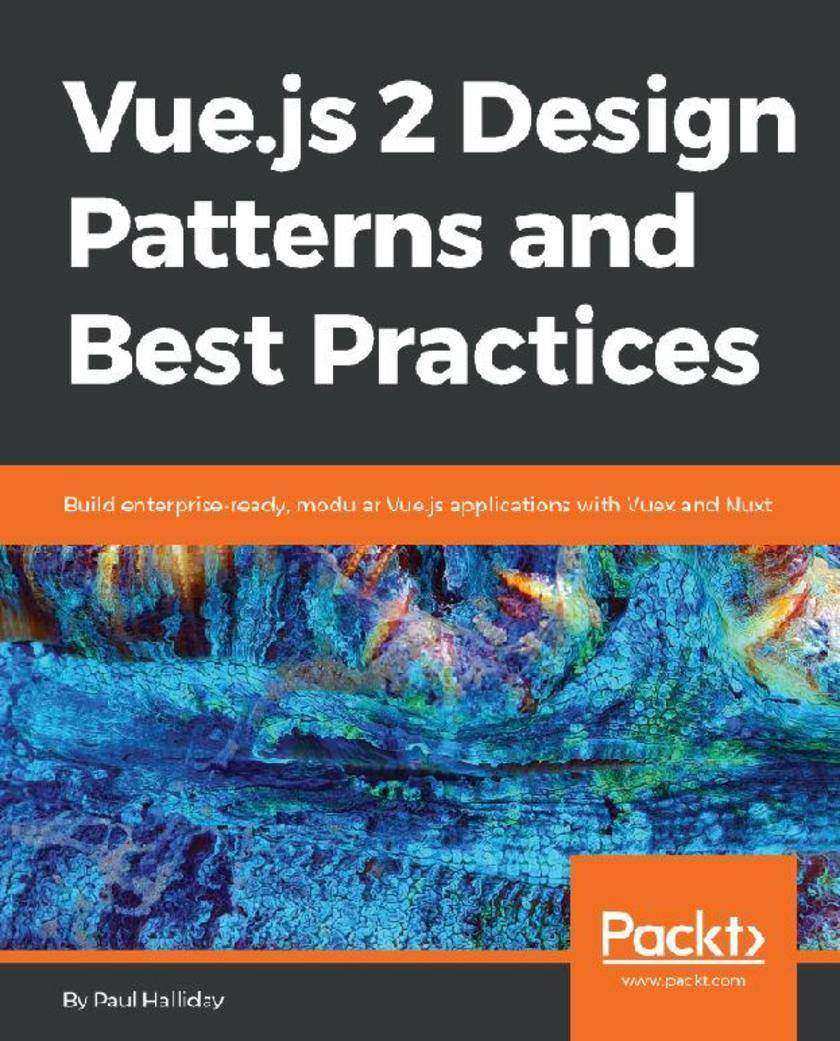
Vue.js 2 Design Patterns and Best Practices
¥81.74
Become an expert Vue developer by understanding the design patterns and component architecture of Vue.js to write clean and maintainable code. About This Book ? Craft highly modular applications by exploring the design patterns and component architecture of Vue.js ? Enforce a Flux-like application architecture in your Vue.js applications with Vuex ? Easy-to-follow examples that can be used to create reusable code and extensible designs Who This Book Is For This book targets Vue Developers who care about framework design principles and utilize commonly found design patterns in developing web applications. What You Will Learn ? Understand the theory and patterns of Vue.js ? Build scalable and modular Vue.js applications ? Take advantage of Vuex for reactive state management. ? Create Single Page Applications with vue-router. ? Use Nuxt for FAST server side rendered Vue applications. ? Convert your application to a Progressive Web App (PWA) and add ServiceWorkers, offline support, and more ? Build your app with Vue.js by following up with best practices and explore the common anti-patterns to avoid In Detail The book starts by comparing Vue.js with other frameworks and setting up the development environment for your application, and gradually move on to writing and styling clean, maintainable, and reusable components that can be used across your application. Further on, you'll look at common UI patterns, Vue form submission, and various modifiers such as lazy binding, number typecasting, and string trimming to create better UIs. You will also explore best practices for integrating HTTP into Vue.js applications to create an application with dynamic data. Routing is a vitally important part of any SPA, so you will focus on the Vue router and explore routing a user between multiple pages. Next, you'll also explore state management with Vuex, write testable code for your application, and create performant, server-side rendered applications with Nuxt. Towards the end, we'll look at common antipatterns to avoid, to save you from a lot of trial and error and development headaches. By the end of this book, you'll be well on your way to becoming an expert Vue developer who can leverage design patterns to efficiently architect the design of your application and write clean and maintainable code. Style and approach This easy-to-follow practical guide will help you develop efficient Vue.js apps by following best practices and using common design patterns.
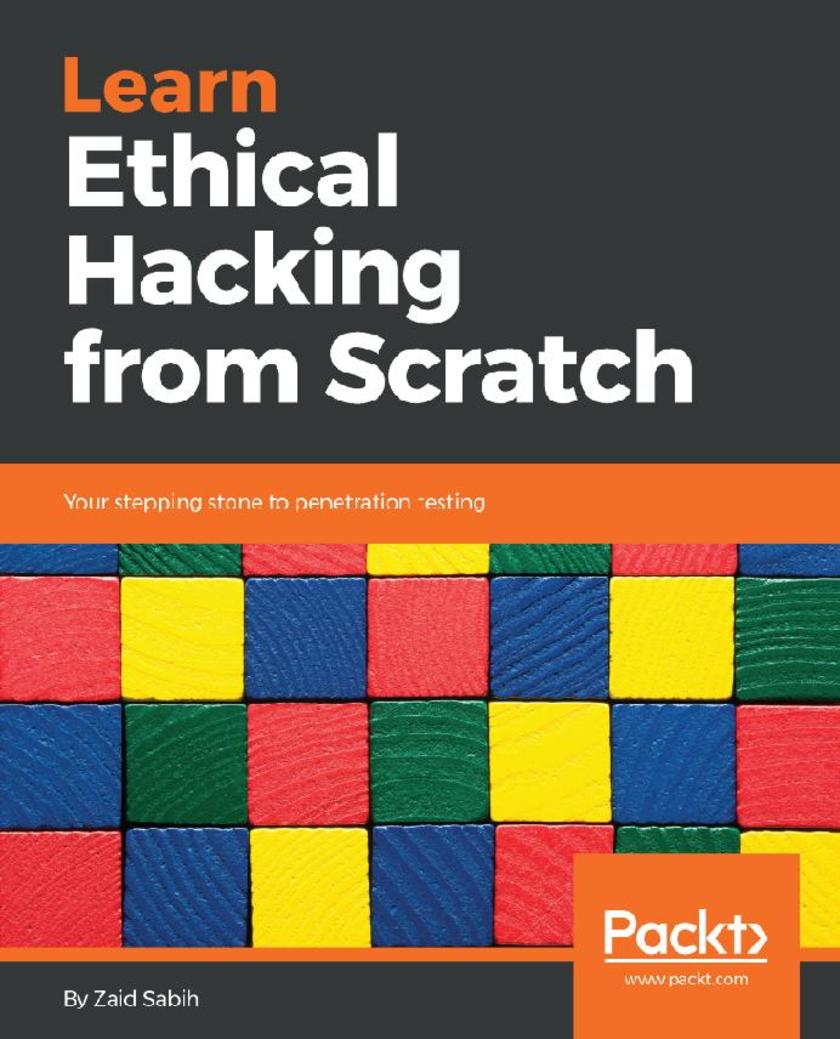
Learn Ethical Hacking from Scratch
¥78.47
Install, Configure and Setup different connections with pfSense Key Features *Build firewall and routing solutions with PfSense. *Learn how to create captive portals, how to connect Pfsense to your https environment and so on. *Practical approach towards building firewall solutions for your organization Book Description As computer networks become ubiquitous, it has become increasingly important to both secure and optimize our networks. pfSense, an open-source router/firewall, provides an easy, cost-effective way of achieving this – and this book explains how to install and configure pfSense in such a way that even a networking beginner can successfully deploy and use pfSense. This book begins by covering networking fundamentals, deployment scenarios, and hardware sizing guidelines, as well as how to install pfSense. The book then covers configuration of basic services such as DHCP, DNS, and captive portal and VLAN configuration. Careful consideration is given to the core firewall functionality of pfSense, and how to set up firewall rules and traffic shaping. Finally, the book covers the basics of VPNs, multi-WAN setups, routing and bridging, and how to perform diagnostics and troubleshooting on a network. What you will learn *Install pfSense *Configure additional interfaces, and enable and configure DHCP *Understand Captive portal *Understand firewalls and NAT, and traffic shaping *Learn in detail about VPNs *Understand Multi-WAN *Learn about routing and bridging in detail *Understand the basics of diagnostics and troubleshooting networks Who this book is for This book is towards any network security professionals who want to get introduced to the world of firewalls and network configurations using Pfsense. No knowledge of PfSense is required
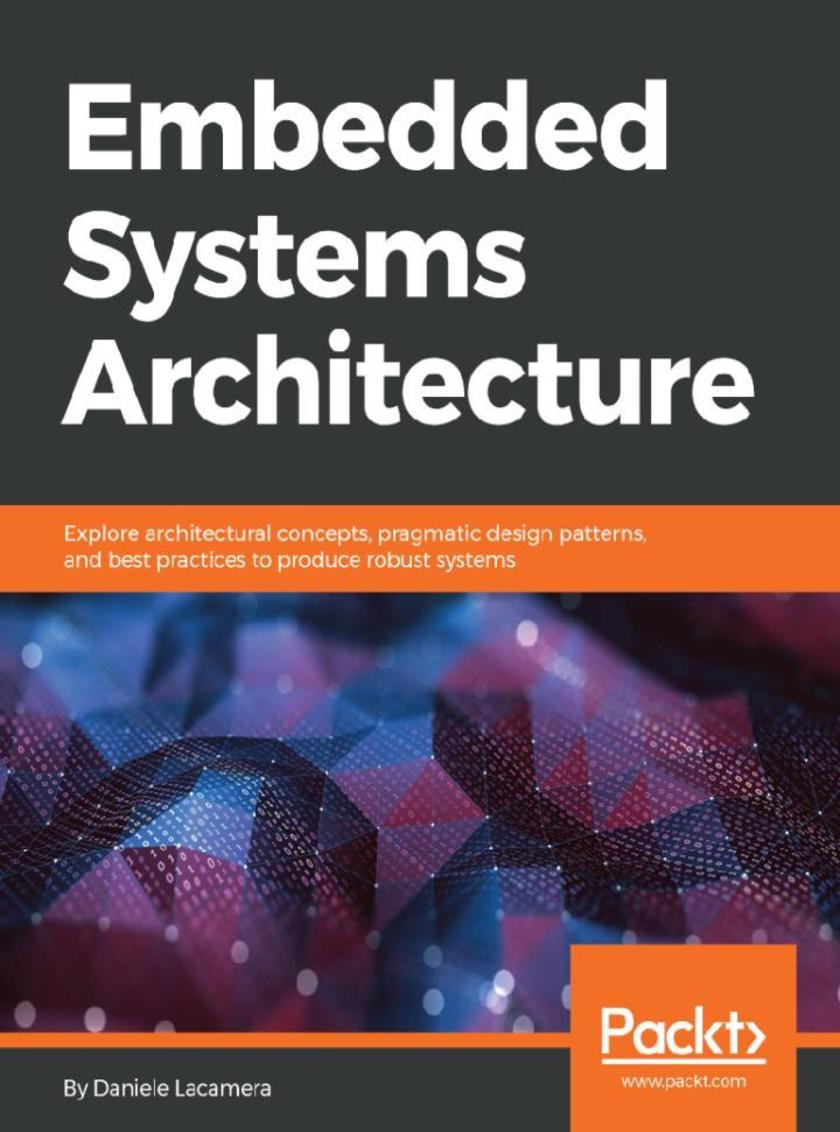
Embedded Systems Architecture
¥81.74
Learn to design and develop safe and reliable embedded systems About This Book ? Identify and overcome challenges in embedded environments ? Understand the steps required to increase the security of IoT solutions ? Build safety-critical and memory-safe parallel and distributed embedded systems Who This Book Is For If you’re a software developer or designer wanting to learn about embedded programming, this is the book for you. You’ll also find this book useful if you’re a less experienced embedded programmer willing to expand your knowledge. What You Will Learn ? Participate in the design and definition phase of an embedded product ? Get to grips with writing code for ARM Cortex-M microcontrollers ? Build an embedded development lab and optimize the workflow ? Write memory-safe code ? Understand the architecture behind the communication interfaces ? Understand the design and development patterns for connected and distributed devices in the IoT ? Master multitask parallel execution patterns and real-time operating systems In Detail Embedded systems are self-contained devices with a dedicated purpose. We come across a variety of fields of applications for embedded systems in industries such as automotive, telecommunications, healthcare and consumer electronics, just to name a few. Embedded Systems Architecture begins with a bird's eye view of embedded development and how it differs from the other systems that you may be familiar with. You will first be guided to set up an optimal development environment, then move on to software tools and methodologies to improve the work flow. You will explore the boot-up mechanisms and the memory management strategies typical of a real-time embedded system. Through the analysis of the programming interface of the reference microcontroller, you'll look at the implementation of the features and the device drivers. Next, you'll learn about the techniques used to reduce power consumption. Then you will be introduced to the technologies, protocols and security aspects related to integrating the system into IoT solutions. By the end of the book, you will have explored various aspects of embedded architecture, including task synchronization in a multi-threading environment, and the safety models adopted by modern real-time operating systems. Style and approach Software developers and designers with experience in different fields, and who want to learn about embedded programming, will benefit from this book. Junior and less experienced embedded programmers willing to expand their knowledge in the field will also find it useful.

Learn PowerShell Core 6.0
¥78.47
Enhance your skills in expert module development, deployment, security, DevOps, and cloud Key Features *A step-by-step guide to get you started with PowerShell Core 6.0 *Harness the capabilities of PowerShell Core 6.0 to perform simple to complex administration tasks *Learn core administrative concepts such as scripting, pipelines, and DSC Book Description Beginning with an overview of the different versions of PowerShell, Learn PowerShell Core 6.0 introduces you to VSCode and then dives into helping you understand the basic techniques in PowerShell scripting. You will cover advanced coding techniques, learn how to write reusable code as well as store and load data with PowerShell. This book will help you understand PowerShell security and Just Enough Administration, enabling you to create your own PowerShell repository. The last set of chapters will guide you in setting up, configuring, and working with Release Pipelines in VSCode and VSTS, and help you understand PowerShell DSC. In addition to this, you will learn how to use PowerShell with Windows, Azure, Microsoft Online Services, SCCM, and SQL Server. The final chapter will provide you with some use cases and pro tips. By the end of this book, you will be able to create professional reusable code using security insight and knowledge of working with PowerShell Core 6.0 and its most important capabilities. What you will learn *Get to grips with Powershell Core 6.0 *Explore basic and advanced PowerShell scripting techniques *Get to grips with Windows PowerShell Security *Work with centralization and DevOps with PowerShell *Implement PowerShell in your organization through real-life examples *Learn to create GUIs and use DSC in production Who this book is for If you are a Windows administrator or a DevOps user who wants to leverage PowerShell to automate simple to complex tasks, then this book is for you. Whether you know nothing about PowerShell or just enough to get by, this guide will give you what you need to go to take your scripting to the next level. You’ll also find this book useful if you’re a PowerShell expert looking to expand your knowledge in areas such as PowerShell Security and DevOps.
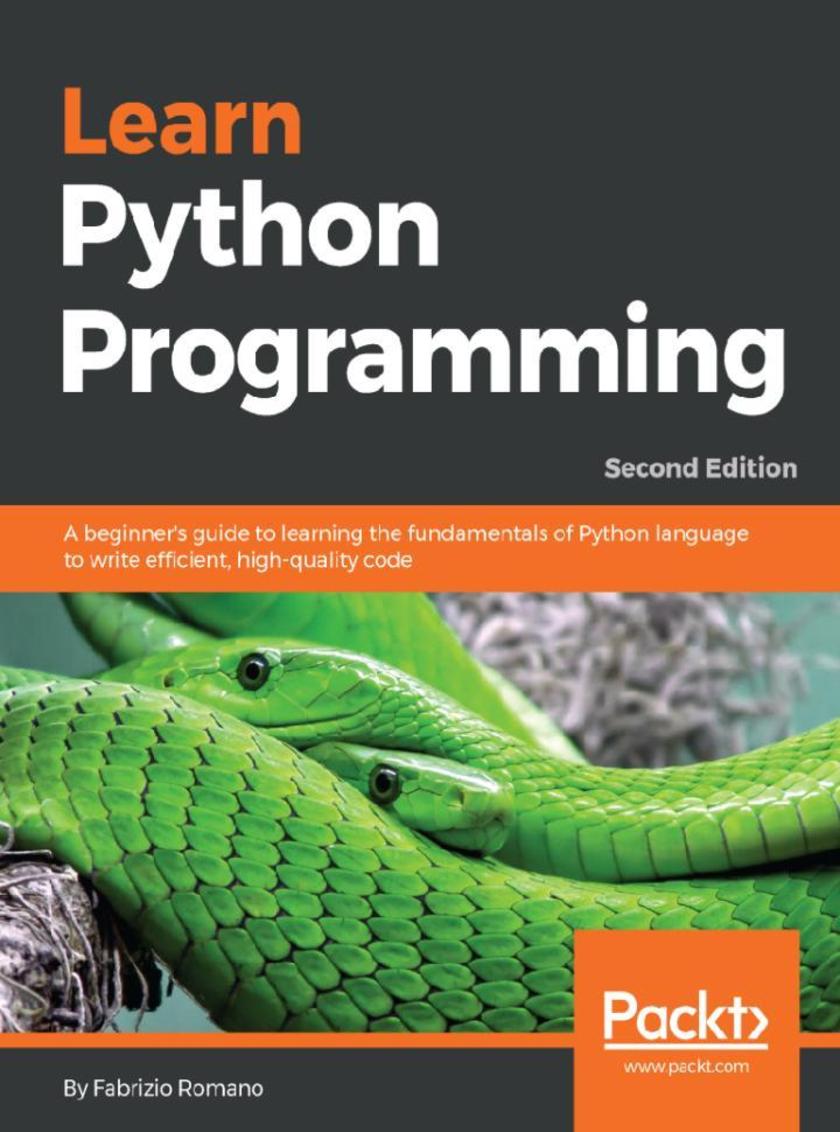
Learn Python Programming
¥61.03
Build a solid foundation in coding by utilizing the language and its core characteristics About This Book ? Leverage the features of Python programming through easy-to-follow examples ? Develop a strong set of programming skills that can be applied on all platforms ? Create GUIs and data science-based applications Who This Book Is For Learn Python Programming is for individuals with relatively little experience in coding or Python. It's also ideal for aspiring programmers who need to write scripts or programs to accomplish tasks. The book takes you all the way to creating a full-fledged application. What You Will Learn ? Get Python up and running on Windows, Mac, and Linux ? Grasp fundamental concepts of coding using data structures and control flow ? Write elegant, reusable, and efficient code in any situation ? Understand when to use the functional or object-oriented programming (OOP) approach ? Walk through the basics of security and concurrent/asynchronous programming ? Create bulletproof, reliable software by writing tests ? Explore examples of GUIs, scripting, and data science In Detail Learn Python Programming creates a foundation for those who are interested in developing their skills in Python programming. The book starts with the fundamentals of programming with Python and ends by exploring different topics such as GUIs and real-world apps. You will begin by exploring the foundations of and fundamental topics on Python and learn to manipulate them. Then, you'll explore different programming paradigms that will allow you to find the best approach to a situation, and you’ll also understand how to carry out performance optimization as well as effective debugging. As you make your way through the chapters, you'll control the flow of a program, and persist and utilize an interchange format to exchange data. You'll also walk through cryptographic services in Python and understand secure tokens. Throughout, the book covers various types of applications, and it concludes with building real-world applications based on all the concepts that you learned. By the end of the book, you'll have a proper understanding of the Python language and a solid grasp on how to work with data. You'll know how to quickly build a website and harness the power of Python's renowned data science libraries. Style and approach This easy-to-follow guide will take you from novice to proficient at a comfortable pace, using a lot of simple yet effective examples.
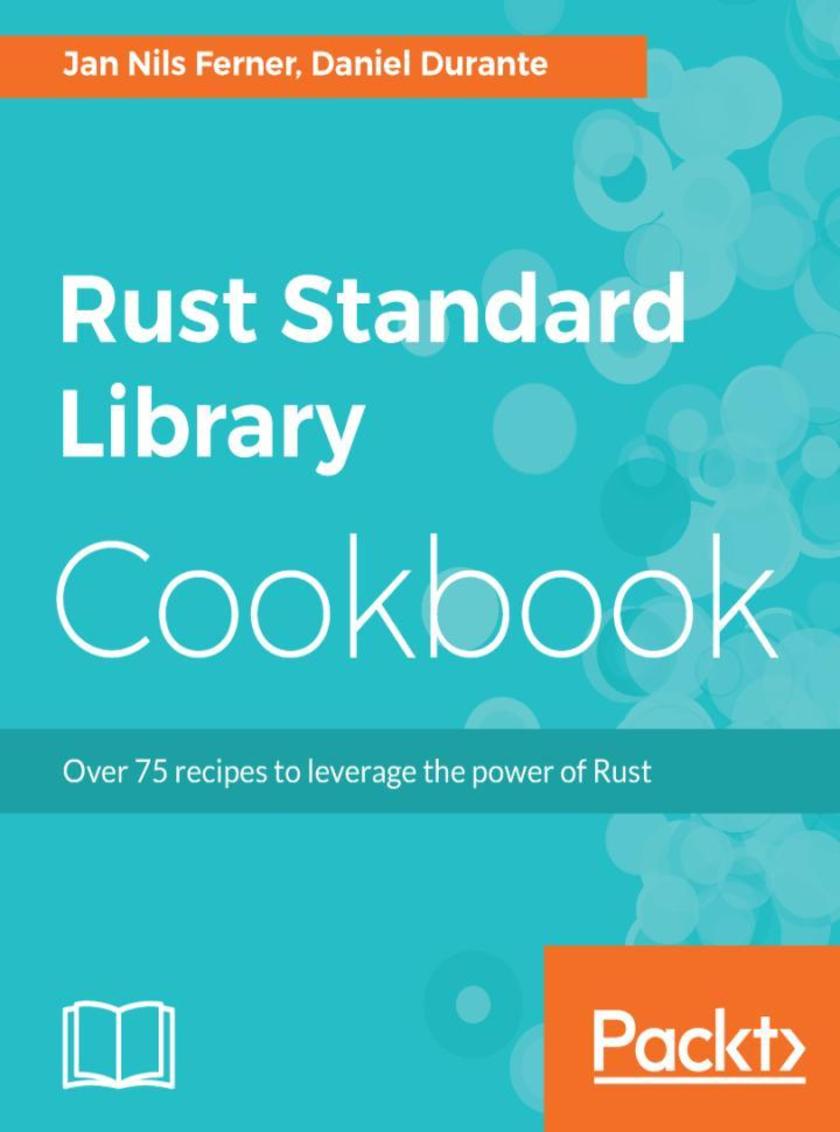
Rust Standard Library Cookbook
¥81.74
Explore the Rust Standard library and compose algorithms with minimal dependency on external libraries About This Book ? Develop high-quality, fast, and portable applications by leveraging the power of Rust's Standard library. ? Practical recipes that will help you work with the Standard library to boost your productivity as a Rust developer. ? Learn about most relevant external crates to be used along with the Standard library. Who This Book Is For This book is for developers who would like to explore the power of Rust and learn to use the STL for various functionalities. A basic Rust programming knowledge is assumed. What You Will Learn ? How to use the basic modules of the library: strings, command line access, and more. ? Implement collections and folding of collections using vectors, Deque, linked lists, and more. ? Handle various file types , compressing and decompressing data. ? Search for files with glob patterns. ? Implement parsing through various formats such as CSV, TOML, and JSON. ? Utilize drop trait , the Rust version of destructor. ? Resource locking with Bilocks. In Detail Mozilla’s Rust is gaining much attention with amazing features and a powerful library. This book will take you through varied recipes to teach you how to leverage the Standard library to implement efficient solutions. The book begins with a brief look at the basic modules of the Standard library and collections. From here, the recipes will cover packages that support file/directory handling and interaction through parsing. You will learn about packages related to advanced data structures, error handling, and networking. You will also learn to work with futures and experimental nightly features. The book also covers the most relevant external crates in Rust. By the end of the book, you will be proficient at using the Rust Standard library. Style and approach This recipe-based practical guide presents each topic with step-by-step instructions on how you can create fast and efficient applications utilizing Rust's Standard library packages.




 购物车
购物车 个人中心
个人中心



